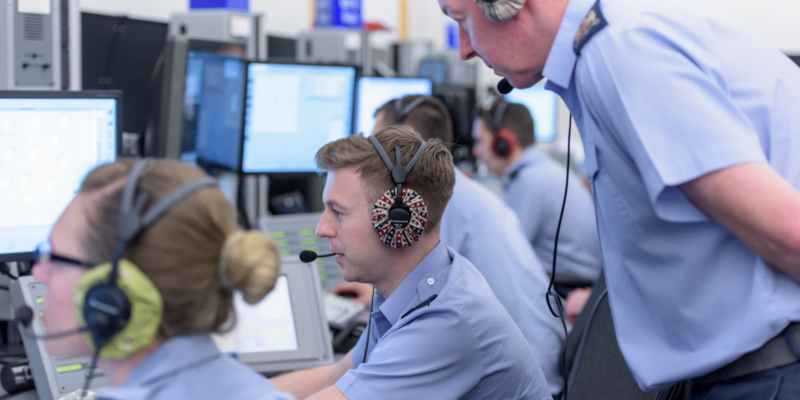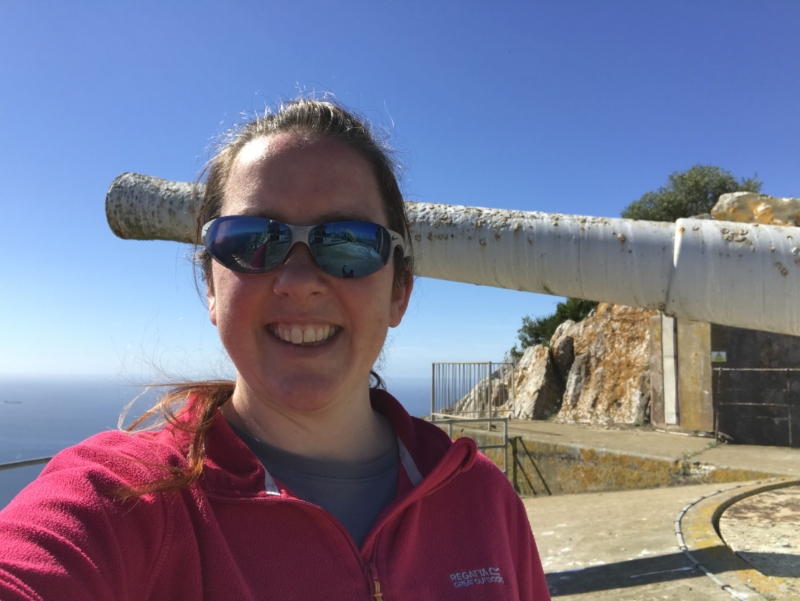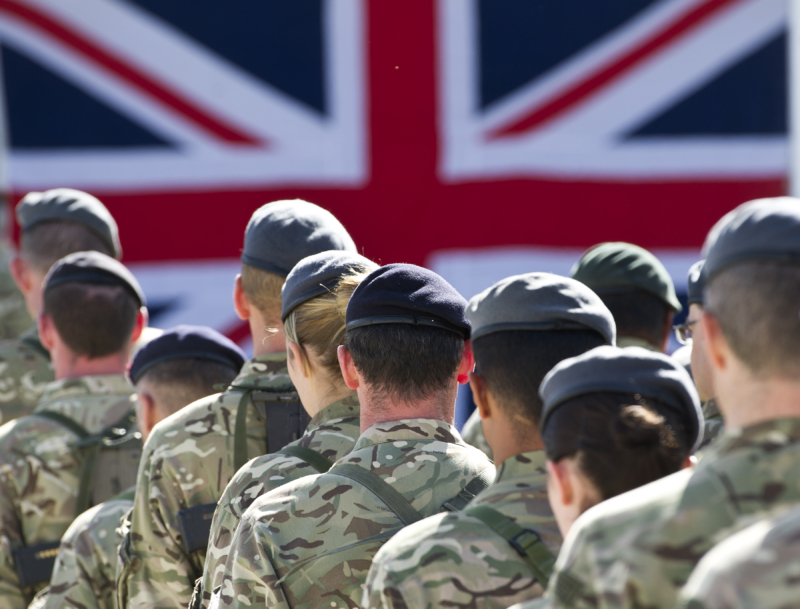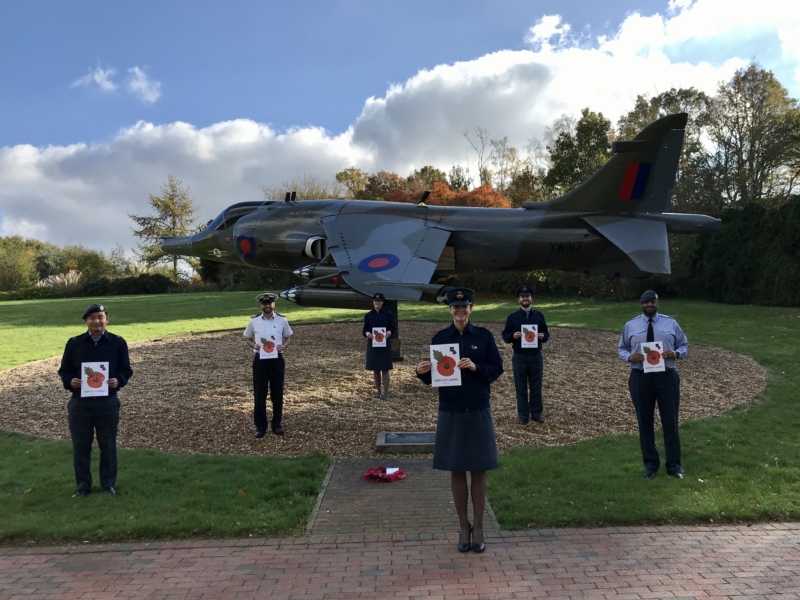To celebrate Armed Forces Week, we invited special guest Wing Commander Chrissie Miller, Officer Commanding of 78 Squadron, to take part in an RAF special episode of our live-stream series Altitude – the place where we discuss interesting industry topics, innovations, challenges and general gossip on aviation.
She was joined by General Manager of Swanwick Operations Gary Dixon and host Ady Dolan, air traffic controller at Heathrow Airport, for what was a fascinating show covering lots of interesting topics.
From sonic booms and Quick Reaction Alert, to deployments during Covid and military training exercises, let’s explore the world of 78 Squadron…
Joint and Integrated
The UK is one of the few countries around the world with a joint and integrated civil and military air traffic control service, with NATS and MoD controllers sitting side by side in the control centre at Swanwick, Hampshire.
This close relationship allows greater cooperation and more flexible use of airspace. But what is the difference between civil and military ATM and how do they work together on a day to day basis? Chrissie explained: “In a nutshell, every day is different. 78 Squadron has a very specific mission in the fact that we provide air traffic control services and critical supporting functions to enable the safe provision of UK air power, but what that actually means in terms of what we provide is much broader.
“We provide area radar services, so essentially ATC above 10,000ft across the UK, airspace management across the entirety of the UK, Distress and Diversion which is essentially emergency services for civil and military aircraft, radar analysis and Northolt radar – so really varied.”
Gary echoed: “It’s difficult to put a value on having military and civil ATC working side by side, but a huge benefit is the interworking and collaboration they provide.
Sharing a common platform helps with co-ordination and the knowledge of what’s happening within each other’s area of responsibility. He continued: “The personal relationships really count, the team literally work side by side, the greater the understanding they have during normal operations the easier it is to deal with the non-standard events that we need to deal with from time to time.”
Quick Reaction Alert
The RAF is monitoring potential threats to UK airspace 24 hours a day, 365 days a year – and you might occasionally see news reports about something called Quick Reaction Alert (QRA).
But what actually happens in the event of an airborne safety incident?

Chrissie said: “We have a Control and Reporting centre at RAF Scampton (soon to move to RAF Boulmer), which monitors UK airspace 24 hours a day. They monitor using a combination of military and civil radars so they can see everything. They have a complete team of identification officers and weapons controllers who can trigger QRA at any time should they need to. “
Gary said: “QRA is probably the best example of where we see the benefit of that side-by-side way of working between civil and military ATC. Early notification from the Swanwick military controllers is key, it provides the maximum amount of time to help clear a route – not only for military aircraft but also for civil aircraft.
He continued: “During busier times we operate very complex, very densely populated airspace and that additional time to clear the route and come up with additional options and make sure all the aircraft we’re trying to separate are managed safely is a real benefit for us.”
Running through what would happen in the event of an imagined scenario whereby a Commercial airliner has entered UK airspace and can’t be reached by radio, Chrissie explained: “The civil supervisor would talk to our Distress & Diversion Cell who are usually the ones to go out on guard frequency, which is the UK emergency frequency line. They will try to make contact with the aircraft three times and if they still can’t get hold of them then we’ll trigger a sequence of events.
“We will tell our Swanwick military supervisor who would immediately co-ordinate with the Control and Reporting Centre. That will then potentially set the trigger to launch Quick Reaction Alert. As you can imagine, it’s a very quick and pressured environment so we make sure we practice it regularly.”
Covid-19
Although civilian air traffic has been historically low over the past year, the RAF has remained busy throughout the pandemic with an 8% rise in military movements.
Chrissie said: “In the forces we’re used to enjoying adventurous training, sport and socials and we’ve not been able to do those things. On the flip side we have enjoyed some normality by remaining busy and in work, so moving forward we are keen to focus on the safe regeneration of traffic with our NATS colleagues.”
From a civil perspective, Gary said: “As we have all had to adapt in our personal lives so have our controllers and our centres to the changing restrictions and needs of COVID. We’ve seen quite dramatic reductions in traffic as well as some relatively quick recoveries, the uncertainty means multiple plans are developed on an on-going basis and then finessed as we get closer to the day of operation.
“The working relationship we have between Chrissie’s team and mine has really helped us to do those things. That shared understanding and awareness that everyone is going through the same thing right now has been a really strong element of the success we’ve had over the past few months.”

78 Squadron has also had a number of personnel deployed to support the ongoing Covid response.
Chrissie said: “One of our project team members spent almost a year on the COVID vaccine task force where he provided detailed logistical and supply chain assurance to maintain the UK supply of COVID19 vaccine in the event of disruption or incident within the wider global supply chain.
“Another member of the Project team was deployed for 3 months as a first responder in support of front-line ambulance services. He established himself as a military emergency care assistant working alongside ambulance clinicians. And we currently have members of the Sqn training to deliver vaccines should they be called upon.”
A look to the future
The challenges we both face are very similar; growing levels of traffic, the integration of unmanned air systems and the constant pressure to improve levels of safety and cost-efficiency – just to name a few!
Thinking about the RAF of twenty years’ time, what might it look like?
Chrissie said: “I think one of the biggest changes we’ll see is more integration with remotely piloted air systems. From an ATM perspective, while we should be operating on our new common platform, undoubtedly there will be adaptations which may make controlling aircraft easier and more predictable.
“There is much work also going into sustainability as part of making our force fit for the future and I guess that’s where ASTRA fits in nicely. ASTRA is essentially the RAF’s concept to build the next generation air force which will feature an inclusive, diverse and empowered workforce reflecting the society we serve.”
Gary added: “It probably comes as no surprise that you could take all of what Chrissie has said and copy it over to NATS.”
The full episode of Altitude is now available to watch on-demand.
Comments
Please respect our commenting policy and guidelines when posting on this website.




